Introduction
Understanding how efficiently a company manages its accounts payable is crucial for maintaining a healthy cash flow and financial stability. The accounts payable turnover ratio serves as a vital sign of a company's financial vitality, reflecting the speed at which it settles its debts to suppliers and vendors. A higher ratio indicates more rapid payment, signaling strong supplier relationships and effective cash management.
Conversely, a lower ratio may suggest slower payment practices, which can impact company liquidity and its ability to negotiate favorable terms. In this article, we will explore the definition and importance of the accounts payable turnover ratio, its formula and calculation, step-by-step calculation examples, and its impact on financial health. We will also discuss industry benchmarking and comparison, converting the ratio to days payable outstanding (DPO), tracking and analyzing trends, improving the ratio, common misconceptions, and best practices.
Join us as we delve into the world of accounts payable turnover and discover how it can contribute to the long-term financial health of businesses in various industries.
Definition and Importance of AP Turnover Ratio
Understanding how efficiently a company manages its accounts payable is crucial for maintaining a healthy cash flow and financial stability. The accounts payable turnover ratio serves as a vital sign of a company's financial vitality, reflecting the speed at which it settles its debts to suppliers and vendors. A higher ratio indicates more rapid payment, signaling strong supplier relationships and effective cash management.
Conversely, a lower ratio may suggest slower payment practices, which can impact company liquidity and its ability to negotiate favorable terms.
Calculating the accounts payable turnover involves dividing the total purchases made from suppliers by the average accounts payable during a specific period. For example, if a company has made $1 million in purchases and the average accounts payable is $200,000, the turnover ratio would be 5. This means that the company pays off its suppliers five times a year, or approximately every 73 days.
In a real-world scenario, a company like Monday.com exemplifies the importance of mastering cash flow management. Amid slowing growth, they rapidly became free cash flow positive, underscoring the value of efficient growth and robust cash management practices. Their ability to generate and sustain free cash flow has been pivotal in extending their cash runway and enhancing shareholder value, a testament to the significance of the accounts payable turnover ratio.
For CFOs, a keen understanding of this ratio is not just about tracking payments; it's about strategic financial management, ensuring compliance and controls, and nurturing vendor relationships, all of which contribute to the long-term financial health of the business. In the dynamic world of finance, where cash is queen, mastering the accounts payable turnover ratio is one step towards reigning supreme over a company's cash flow and ensuring operational excellence.
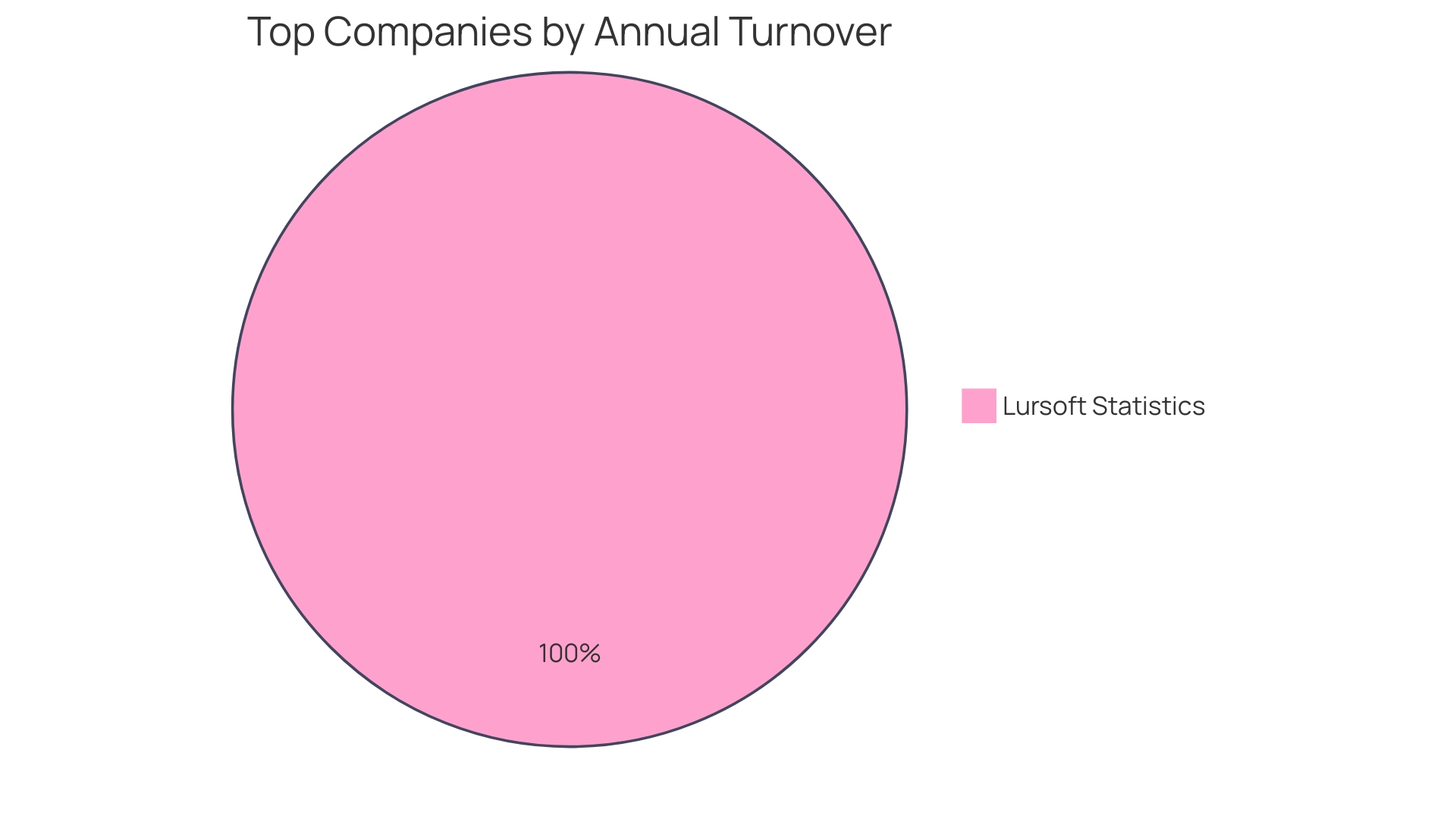
AP Turnover Ratio Formula and Calculation
Understanding the Accounts Payable (AP) turnover ratio is a practical necessity for businesses keen on managing their working capital and cash flow effectively. To compute this ratio, one should divide the total credit purchases by the average accounts payable for the period. Here's the formula:
AP Turnover Ratio = Total Credit Purchases / Average Accounts Payable
This ratio provides insight into how frequently a company pays off its suppliers within a given period. For instance, a higher AP turnover rate indicates a quicker payment to suppliers, which could suggest favorable payment terms or efficient cash management. Conversely, a lower turnover might imply delayed payments, potentially raising concerns about the company's liquidity.
When analyzing the AP turnover, it's crucial to consider the context of the industry standards and the company's credit policies. For example, in industries with high staff turnover rates, such as retail and hospitality, businesses often extend their AP to manage cash flows for workforce investments. As per recent statistics, the leisure and hospitality industry in the USA reported an 84.9% turnover rate in 2021, significantly higher than the national average of 47.2%.
This indicates a strategic use of AP turnover as a tool to allocate resources more efficiently towards employee training and well-being, which are critical in high-stress environments.
A comprehensive understanding of the AP turnover ratio assists businesses of all sizes, from tech giants like Google and LinkedIn to mid-sized companies like Peloton and smaller scaleups, in making informed decisions that align with their operational needs and financial strategies.
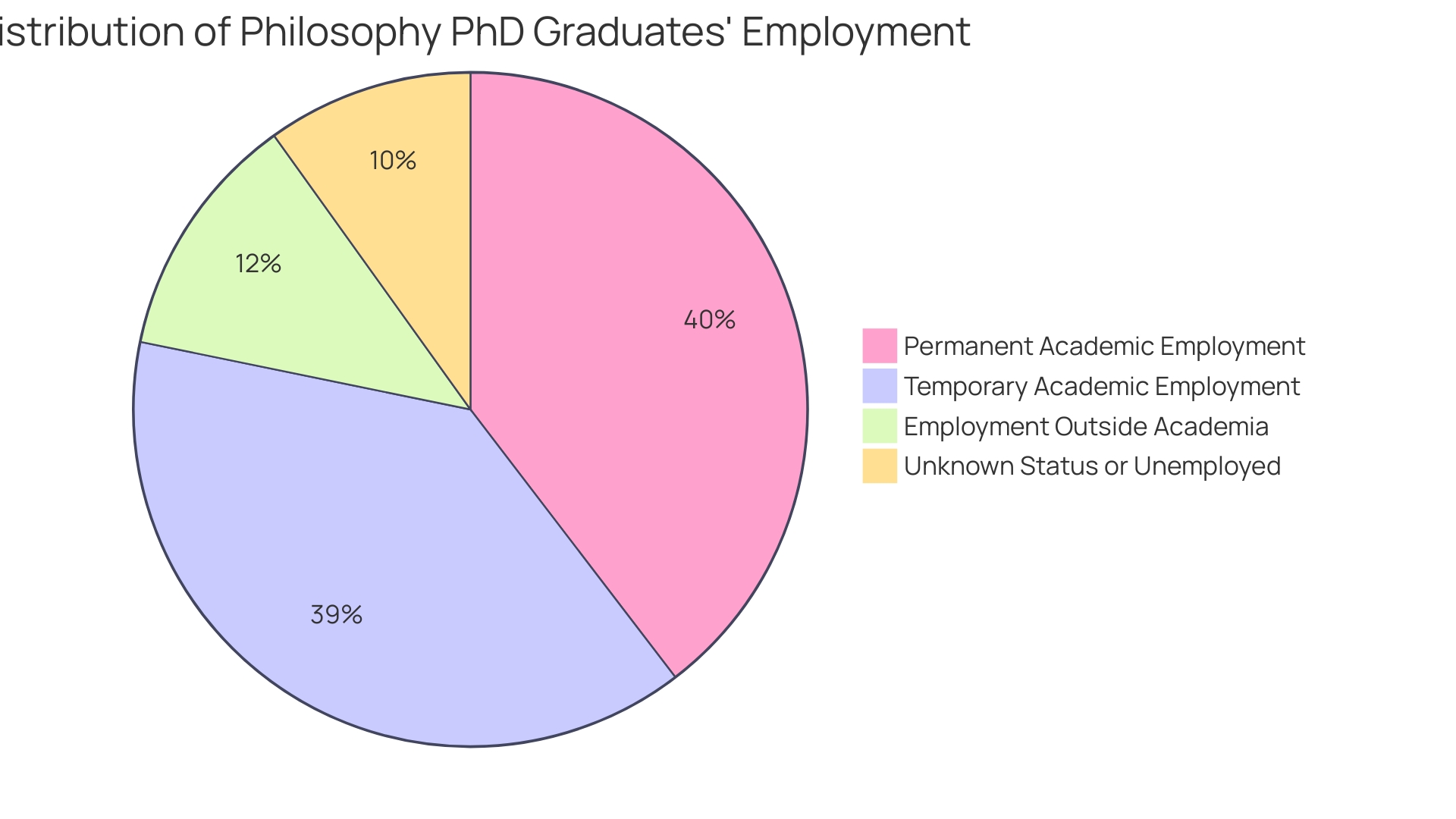
Step-by-Step Calculation Example
Mastering the calculation of the Accounts Payable (AP) turnover ratio is essential for financial professionals aiming to optimize their company's cash flow management. To illustrate the process, imagine a company with specific financial figures. By dissecting these numbers, we can reveal insights into the frequency at which the company pays off its suppliers.
The AP turnover ratio is a key metric reflecting how often a business clears its accounts payable within a given period. It's calculated by dividing the total net credit purchases by the average accounts payable during that period. Here's how to approach this calculation:
- Identify the total net credit purchases over the fiscal year. This figure should include all purchases made on credit, less any returns or discounts received.
- Determine the average accounts payable. This is found by adding the accounts payable at the beginning and end of the period and dividing by two.
- Divide the total net credit purchases by the average accounts payable to find the AP turnover ratio.
For instance, if a company has made $500,000 in net credit purchases and the average accounts payable is $50,000, the AP turnover ratio would be 10. This indicates that the company pays off its suppliers ten times a year, or roughly every 36.5 days.
Understanding and applying the AP turnover ratio helps businesses manage their cash flow more effectively. A higher ratio suggests a company is paying its suppliers at a faster rate, which could be advantageous in securing favorable payment terms or discounts. Conversely, a lower ratio might indicate slower payment practices, which could strain supplier relationships or signal cash flow issues.
In the dynamic world of business, where cash is king, maintaining a healthy AP turnover ratio can be a balancing act. It's crucial not to overlook the importance of this financial barometer. By regularly monitoring it, companies can make informed decisions that enhance their financial stability and credibility with suppliers.
Calculating Average Accounts Payable Balance
Grasping the accounts payable turnover ratio is pivotal in scrutinizing a company's payment patterns over a given timeframe. This ratio hinges on knowing the average accounts payable balance, a figure that reflects not just the volume of a company's obligations but also the efficiency with which it settles them. To accurately calculate this average, one must consider the total accounts payable at the beginning and end of the period, adding these amounts together and dividing by two.
This produces a meaningful metric that, when analyzed in conjunction with other financial ratios, can offer profound insights into a company's fiscal health and creditworthiness.
For instance, a software-based startup might meticulously code accounts payable data to achieve precision in financial reporting—a practice that proves invaluable when communicating with financial professionals. Moreover, in a climate where even major players like Chase Bank are being outperformed in the high-rate savings account market, the importance of maximizing every financial strategy, including efficient management of accounts payable, becomes even more pronounced.
Current economic trends underscore the necessity of such financial diligence. Amidst inflation concerns and fluctuating market conditions, as indicated by the NFIB Small Business Optimism Index and the Uncertainty Index, the role of accurate financial analysis becomes central to business success. Accounts payable turnover, a key financial ratio, is part of this analysis, helping businesses to strategize effectively in the face of these economic challenges.
Interpreting AP Turnover Ratio Results
To accurately assess the implications of the Accounts Payable (AP) turnover ratio, one must delve into the nuances of what the figure represents in relation to the company's financial protocols. This ratio, a reflection of how often a company pays off its suppliers within a given period, can be indicative of its liquidity and operational efficiency. For instance, a higher AP turnover may suggest prompt payments, potentially leveraging early payment discounts or strong supplier relationships.
Conversely, a lower ratio might signal delayed payments, which could either be a strategic move to optimize cash flow or an indication of cash shortages. Therefore, when examining the AP turnover, it is imperative to consider the context of the company's industry standards, payment terms, and overall financial strategy to determine whether its payment practices are aligned with its business objectives.
Impact of AP Turnover Ratio on Financial Health
The Accounts Payable (AP) turnover ratio is a critical metric that reveals the efficiency of a company's cash flow management, reflecting how well it manages its payable obligations to suppliers and vendors. This ratio is a snapshot of the rate at which a company pays off its suppliers. While a higher AP turnover rate indicates that a company is paying off its suppliers at a faster rate, which might imply good relationships with vendors and the potential for negotiated discounts or favorable terms, a lower AP turnover rate can signal cash flow issues or a strategic decision to optimize cash on hand.
Understanding and monitoring this ratio can provide valuable insights into a company's financial operational strategies and its standing with its business partners.
Industry Benchmarking and Comparison
Understanding the accounts payable turnover ratio is a critical aspect of financial analysis, and one of the most valuable uses of this metric is in benchmarking against industry standards. By analyzing how your AP turnover compares to peers, you can gain actionable insights into your company's operational efficiency and financial health. Benchmarking provides a clear perspective on where you stand in your industry, revealing whether your payment practices are too slow, which could strain supplier relationships, or too fast, potentially indicating a missed opportunity to better manage cash flow.
It's essential to consider that a positive variance from industry norms isn't always desirable, and a negative variance isn't inherently problematic. The context matters—as highlighted by a recent analysis of a vast range of companies, from startups to established enterprises across six key sectors. The report, which included data from 7,700 companies, revealed a significant increase in data-driven decision-making, with a 56% uptick in Mixpanel reports generated in 2023 to navigate the complexities of that year's turbulent market conditions.
When benchmarking, it's also important to look at a tailored version of data that reflects regional and market-specific realities, as well as different classes and sizes within your industry. For example, a hospitality marketing report might offer dedicated benchmarks for various regions—North America, APAC, EMEA, Global—and delve into local market nuances. This detailed approach ensures that you're comparing apples to apples and provides a true picture of the factors influencing each metric.
Moreover, insights from industry experts underscore the importance of adapting to market changes and adopting technology to remain competitive. In the manufacturing sector, for example, a study involving numerous interviews with company representatives revealed that consumer preferences for product customization and competitive pricing are driving companies to rethink their strategies.
In summary, benchmarking your AP turnover ratio isn't just about comparing numbers; it's about understanding the story behind those numbers and how they relate to broader industry trends, regional differences, and market dynamics. With this comprehensive approach, you can set realistic goals, celebrate your team's successes, and make informed decisions to steer your company towards financial excellence.
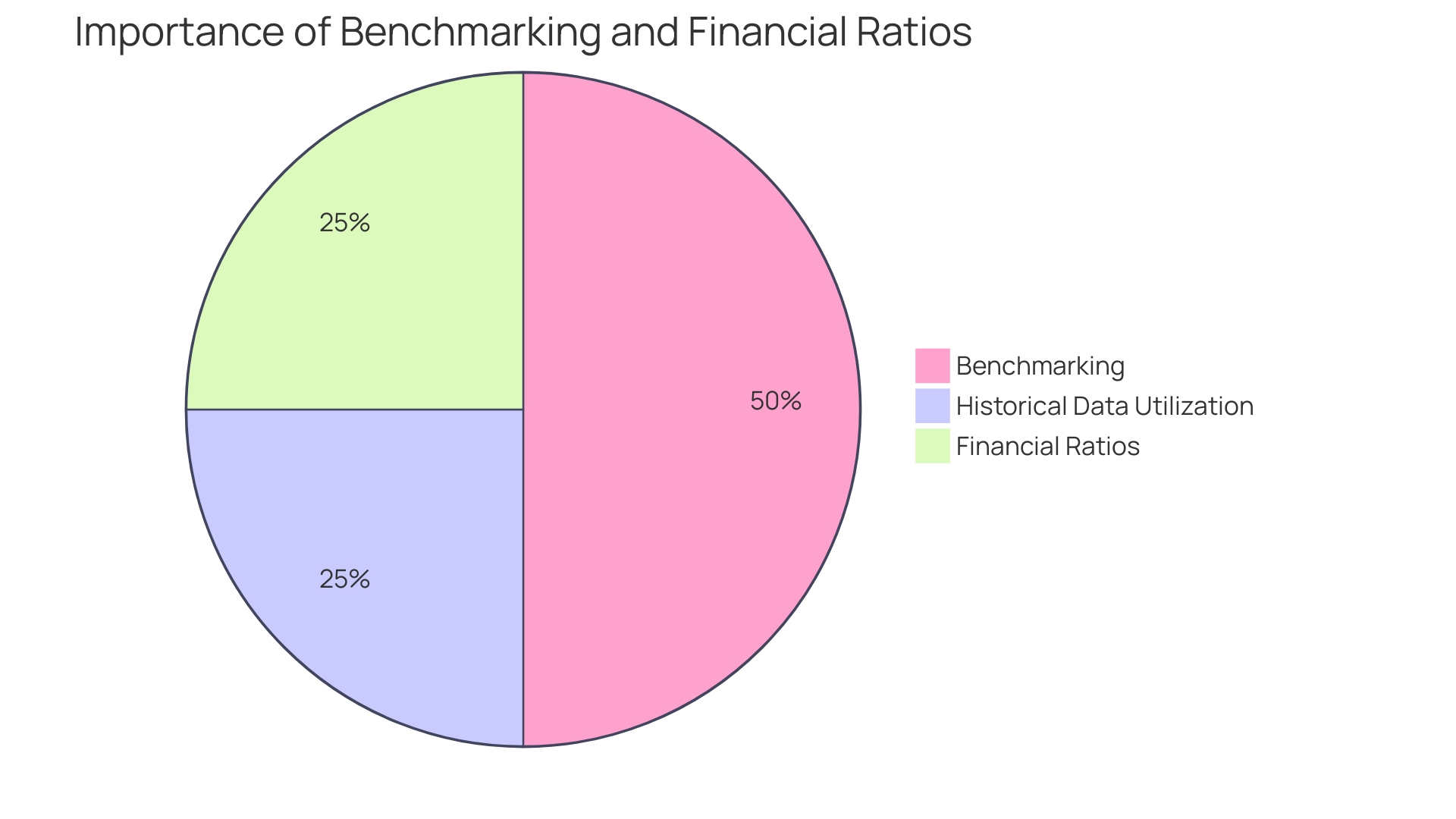
Converting AP Turnover Ratio to Days Payable Outstanding (DPO)
Grasping the accounts payable turnover ratio gives insight into the frequency of a company's bill payments, but when converted into days payable outstanding (DO), it offers a clearer picture of the actual time taken to settle supplier invoices. DO is the average duration a company takes to pay off its accounts payable. This metric is pivotal for managing operational liquidity and can be a telltale sign of a company's financial efficiency.
To calculate DPO from the accounts payable turnover ratio, one must understand the relationship between these two figures. The formula to determine DPO is: (Number of Days in Period / AP Turnover Ratio). A higher DPO indicates that a company is taking longer to pay its bills, which could be a strategic financial decision or a sign of cash flow issues.
Conversely, a lower DPO suggests quicker payment to suppliers, which could mean the company is capitalizing on early payment discounts or striving to maintain strong supplier relationships.
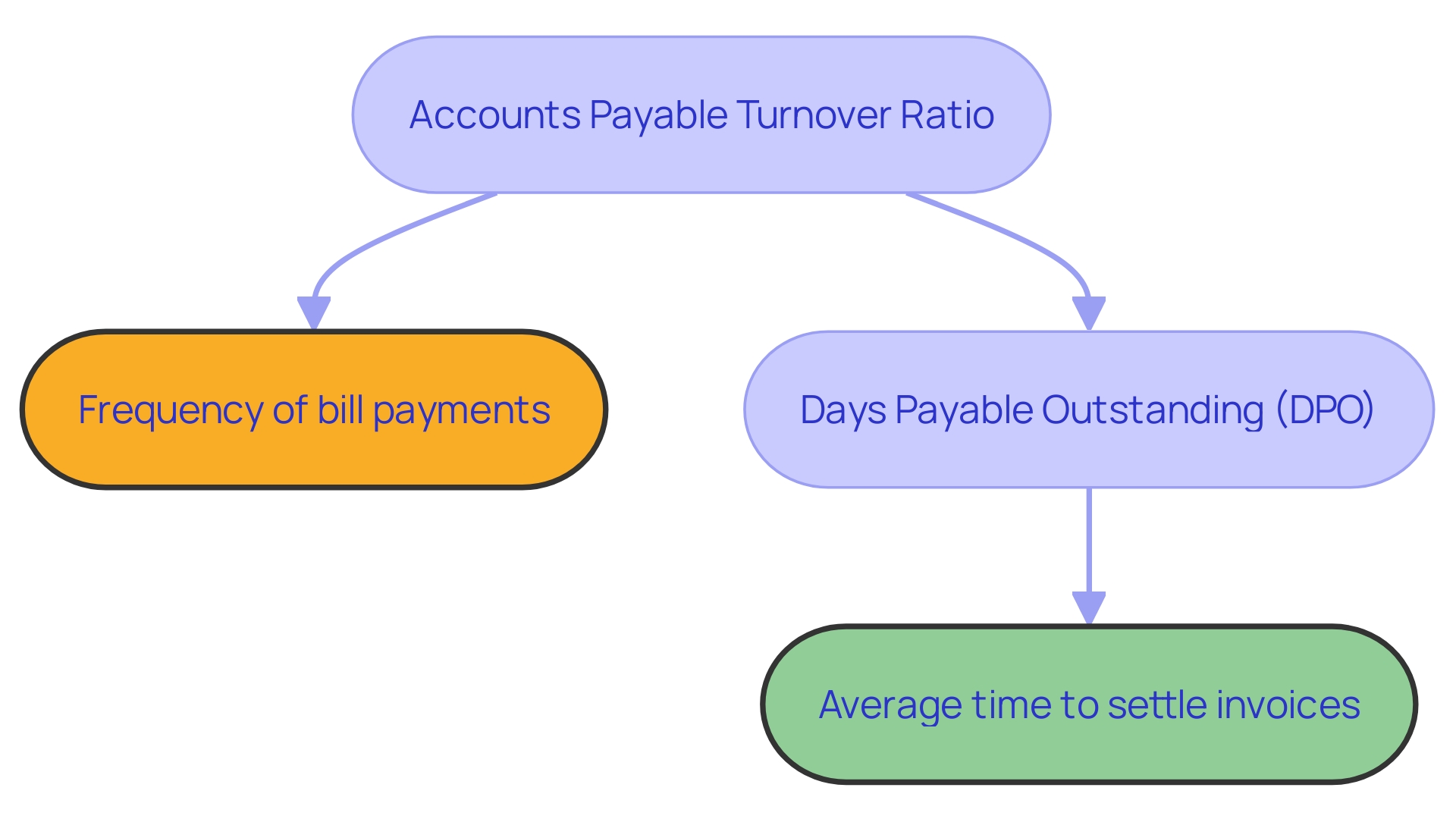
Tracking and Analyzing AP Turnover Ratio Trends
Understanding the Accounts Payable (AP) turnover ratio is a key element in assessing a company's financial health. By examining the frequency at which a business pays off its suppliers within a given period, financial professionals can gain insights into the company's cash flow management and creditor relations.
The AP turnover ratio, when tracked over sequential periods, can reveal the impact of management decisions and external factors on a company's operational efficiency. For instance, a sudden decrease in the AP turnover ratio could signal a change in supplier payment policies or cash flow difficulties, while an increase might indicate improved liquidity or strategic early payment discounts.
Seasonal variations, such as increased purchasing during holidays, can also affect this ratio. A case in point is observing a fluctuation in the AP turnover during specific weeks, such as the week of July 3rd, 2023, which saw an atypically high churn rate. This could be correlated with external events like outages or the introduction of new product features.
Similarly, weeks with lower churn, like the week of May 22nd, 2023, could be attributed to successful marketing campaigns or holidays, prompting further investigation into the causes behind these variations.
Incorporating findings from extensive datasets, such as those analyzed in 'Scaling Through Chaos', which examined the profiles of employees from successful tech companies, can help contextualize the AP turnover data. These analyses underscore the importance of embracing the dynamic nature of business operations and understanding that shifts in financial ratios often reflect an evolving business landscape.
Industry experts, as highlighted in presentations, emphasize the challenges and opportunities that come with interpreting financial data in an era marked by media fragmentation and the emergence of new technologies. These perspectives underscore the relevance of financial ratios in guiding strategic decision-making.
In summary, the AP turnover ratio is not just a figure on a balance sheet; it is a dynamic indicator that, when analyzed over time, provides valuable insights into a company's financial strategies and operational health. Regular analysis of this ratio equips businesses with the knowledge to make informed decisions, adapt to market changes, and maintain a competitive edge.
Improving AP Turnover Ratio
A robust Accounts Payable (AP) turnover ratio is essential for maintaining a healthy financial position and securing trust with suppliers. By optimizing this metric, businesses can ensure they are efficiently managing their cash flow and strengthening their financial performance. For example, Purdue University, renowned for academic excellence and innovation, faced operational challenges with its IT infrastructure.
Despite high service levels in network and system operations, the university recognized the need for enhancement to meet the high standards expected by its community. Similarly, companies aiming to improve their AP turnover ratio should focus on streamlining processes and adopting efficient management strategies.
High turnover rates in any industry can lead to increased operational costs and reduced productivity. In the hospitality sector, for instance, the average turnover rate in 2021 was 84.9%, which is significantly higher than the national average of 47.2%. This exemplifies the urgency for businesses to implement effective strategies to manage and improve their turnover ratios.
Comprehensive training and development programs can prove pivotal in equipping employees with the skills necessary to excel, thereby reducing turnover rates and fostering a more stable operating environment.
Considering the implications of turnover rates, it's evident that addressing this issue is not just about managing numbers but also about understanding and refining processes. As mentioned in the context of data sourcing and procurement, capturing the benefits of process transformation can lead to competitive advantages. For instance, the ability to quickly onboard new services and datasets can be a source of 'alpha' or profit for investment firms.
By creating additional capacity to source data and increasing the speed of onboarding, companies can avoid missed opportunities and improve their bottom lines.
In the face of these challenges, forward-looking statements from companies often highlight the importance of managing expenses and adapting to changes in the marketplace. As with the case of Acutus, which focuses on left-heart access products, companies must navigate uncertainties, including market acceptance and regulatory approvals, while maintaining financial health. The lessons learned from managing AP turnover ratios and other financial metrics are applicable across industries, underlining the importance of agility and strategic planning in today's dynamic business environment.
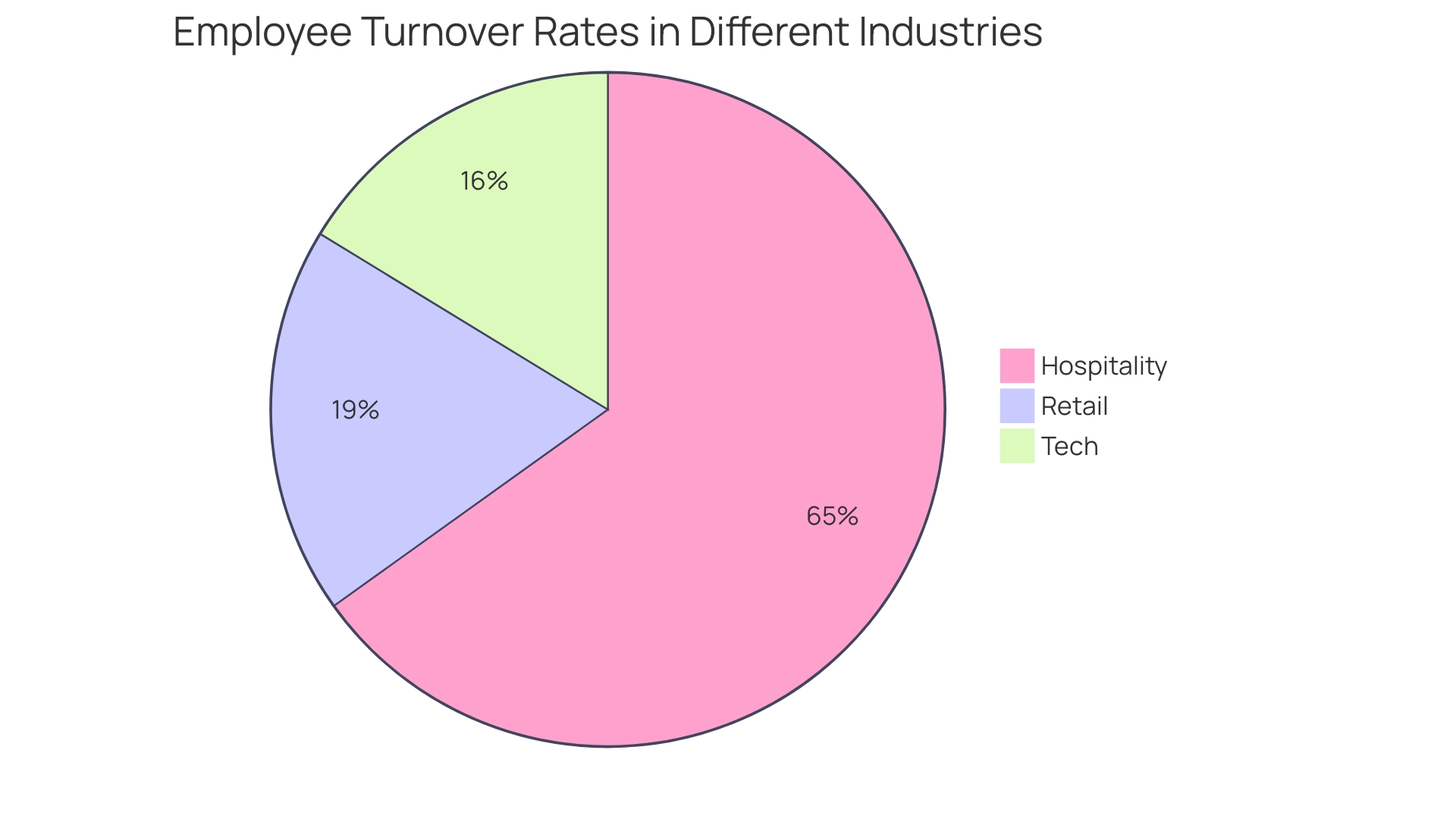
Common Misconceptions and Best Practices
Clearing the Fog: Best Practices for the Accounts Payable Turnover Ratio
Demystifying the accounts payable turnover ratio is key for CFOs who aim to steer their organizations towards financial success. Misconceptions can cloud the interpretation of this metric, leading to misguided decision-making. To navigate this, it's essential to focus on accurate calculations and the judicious application of the ratio within the broader context of business strategies and financial planning.
Let's start by understanding that forward-looking statements, while helpful, must be taken with a grain of caution. Phrases like "anticipate," "estimate," and "predict" are common in discussing future business potentials, but they carry inherent risks and uncertainties. The AP turnover ratio, when used correctly, can help predict cash flow needs and manage liquidity, but it should not be the sole factor in making financial decisions.
In the realm of financial reporting, accuracy is paramount, as evidenced by AP's reputation for trustworthy election counts since 1848. Similarly, the integrity of the AP turnover ratio depends on precise calculations and consistent reporting. It's a reflection of how effectively an organization manages its payable obligations over a period, providing insights into the operational efficiency and short-term financial health.
To ensure the ratio's accuracy, consider employing automated tools for statistical verification, which can highlight inconsistencies and errors in financial data. By doing so, CFOs can avoid the pitfalls of relying on incorrect figures which could lead to misinformed strategies.
Adopting best practices for interpreting the AP turnover ratio includes understanding its implications for cash management and operational agility. Strategic partners in various industries emphasize the importance of tailored solutions and operational problem-solving, which aligns with the need for CFOs to customize the interpretation of financial metrics to their unique business contexts.
In conclusion, by debunking common misconceptions and applying best practices, CFOs can leverage the accounts payable turnover ratio as a potent tool for achieving financial clarity and driving sustained growth.
Conclusion
Understanding and effectively managing a company's accounts payable is crucial for maintaining financial stability and a healthy cash flow. The accounts payable turnover ratio reflects the speed at which a company settles its debts to suppliers and vendors, with a higher ratio indicating strong supplier relationships and effective cash management. Calculating this ratio involves dividing total purchases by the average accounts payable, providing insights into payment frequency.
CFOs must go beyond tracking payments and view the accounts payable turnover ratio as a strategic financial management tool. It ensures compliance, controls, and nurtures vendor relationships, contributing to the long-term financial health of the business.
Benchmarking the accounts payable turnover ratio against industry standards helps businesses assess their operational efficiency and financial health. Converting the ratio to days payable outstanding (DPO) provides a clearer picture of payment timeframes. A higher DPO indicates longer payment terms, while a lower DPO suggests quicker payment to suppliers.
Tracking and analyzing the ratio over time reveals the impact of management decisions and external factors on operational efficiency. Seasonal variations and market dynamics require adaptable strategies. Regular analysis empowers businesses to make informed decisions, adapt to changes, and remain competitive.
Improving the accounts payable turnover ratio is vital for financial health and supplier trust. Streamlining processes and adopting efficient management strategies optimize this metric. Addressing high turnover rates through training and development programs reduces costs and fosters stability.
To interpret the ratio accurately, debunk misconceptions and apply best practices. Accurate calculations, consistent reporting, and contextual understanding are essential. CFOs can leverage the ratio as a tool for financial clarity and sustained growth.
In conclusion, mastering the accounts payable turnover ratio is crucial for CFOs to optimize cash flow management and strengthen financial performance. Understanding and applying this ratio enables informed decisions, adaptation to market changes, and operational excellence.




